Remote work in healthcare is transforming the industry, improving access, flexibility, and patient care beyond traditional boundaries.
In recent years, the healthcare sector has witnessed a paradigm shift with the growing embrace of remote work. This transformation, fueled by technological advancements and accelerated by the challenges posed by the COVID-19 pandemic, is reshaping the landscape of healthcare delivery. This article delves into the multifaceted aspects of remote work in healthcare, examining its origins, benefits, challenges, and the profound impact it has on both healthcare professionals and patients.
1.The Evolution of Remote Work in Healthcare
Technology has been a catalyst for change, introducing telemedicine platforms, electronic health records, and secure communication tools. The pandemic, acting as an accelerant, propelled healthcare institutions to adopt remote work practices, allowing professionals to provide essential services while adapting to the constraints of the crisis.
2.Benefits and Transformations
Remote work in healthcare offers an array of benefits. Improved access to care becomes evident as geographical barriers diminish, opening avenues for individuals in remote areas to receive medical attention. The flexibility it affords healthcare professionals contributes to enhanced work-life balance, potentially attracting and retaining skilled professionals seeking alternative work arrangements. Additionally, the efficiency gains and cost savings associated with remote work are reshaping traditional administrative processes within healthcare organizations.
3.Navigating Challenges
Despite its advantages, remote work in healthcare is not without challenges. Security and privacy concerns are paramount, necessitating robust measures to safeguard sensitive patient data. Integrating new technologies into existing healthcare systems poses logistical challenges, requiring thoughtful solutions to ensure seamless operations.
4.Impact on Patient Care
Remote work is not merely a logistical shift; it significantly influences patient care. Virtual consultations, remote monitoring, and telehealth practices are redefining patient engagement and contributing to the continuity of care, particularly in times of unforeseen disruptions.
5.Anticipating Future Trends
Looking ahead, the evolution of telehealth continues, with emerging trends in virtual reality applications, remote diagnostics, and the integration of artificial intelligence in patient care. Remote work policies are likely to persist, influencing the structure of healthcare organizations and the overall healthcare workforce.
In conclusion, the integration of remote work in healthcare marks a transformative phase in the industry's evolution. Beyond its logistical implications, remote work is fundamentally changing how healthcare is accessed, delivered, and experienced. As technology advances and societal needs evolve, healthcare professionals and organizations must adapt to ensure a resilient and patient-centered approach to care.
Remote Work in Healthcare: Analyzing the Statistics and Trends
The adoption of remote work in healthcare has accelerated, influenced significantly by the COVID-19 pandemic and technological advancements. Here are some key statistics and insights into this trend:
Embracing Virtual Behavioral Health: The pandemic has led to a surge in demand for behavioral health services. This has prompted a shift towards virtual behavioral health solutions, with payers increasingly investing in these services. The focus is on improving access to mental health services and reducing employee burnout.
Remote Work Statistics:
- Work-Life Boundaries: 45% of remote workers find it easier to create work-life boundaries when working remotely.
- Healthy Work-Life Boundaries: 78% of remote workers consider their work-life boundaries healthy.
- Working More but Feeling Energized: 44% of remote workers reported working more this year compared to last year, yet almost half feel more energized than a year ago.
- Connection with Colleagues: 75% of remote workers feel connected to their colleagues or clients.
Benefits of Remote Work:
- Work-Life Balance: Remote work provides better control over daily schedules, reducing commute times and allowing more time for personal activities.
- Millennials' Preferences: 69% of millennials would forgo certain work benefits for more flexible working space.
Financial Aspects:
- Annual Income: Remote workers have an average annual income $4,000 higher than other workers.
- Savings: Remote workers save approximately $7,000 per year on transportation, food, and childcare.
- Profit Increase for Companies: Companies allowing remote work see an average profit increase of $2,000 per remote worker.
Remote Work Challenges:
- Unplugging After Work: 22% of remote workers struggle with unplugging after work.
- Loneliness and Communication: 19% face loneliness and 17% face communication challenges as the biggest issues associated with remote work.
These statistics underscore the growing importance of remote work in healthcare, highlighting benefits like improved work-life balance and financial advantages. However, they also shed light on challenges like maintaining boundaries and managing loneliness, indicating areas for improvement as the healthcare industry continues to embrace remote work models.
References





